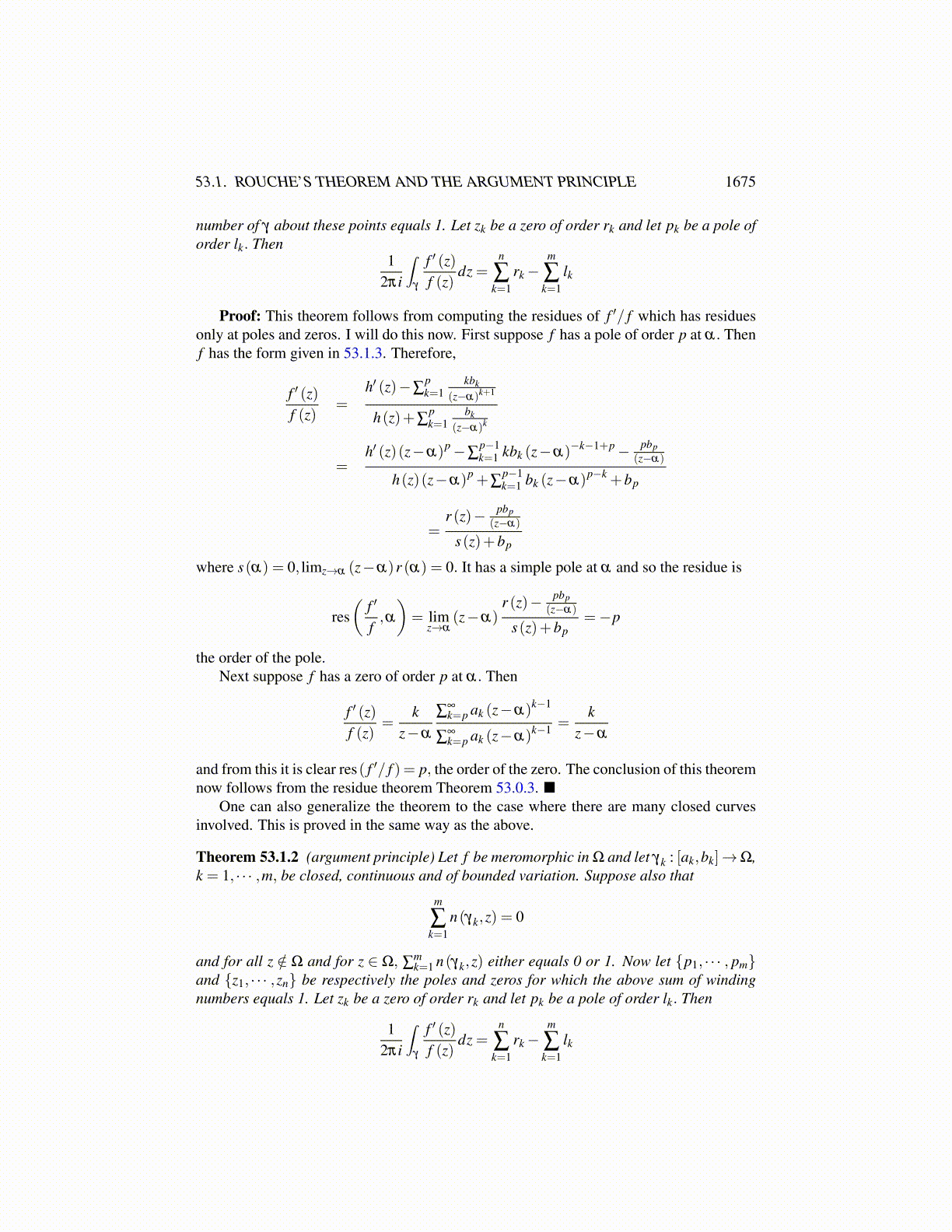
1675
This gives the same answer because cos(x)/x is odd. Consider the following contour inwhich the orientation involves counterclockwise motion exactly once around.
−R R−R−1 R−1
Denote by γR−1 the little circle and γR the big one. Then on the inside of this contourthere are no singularities of eiz/z and it is contained in an open set with the property thatthe winding number with respect to this contour about any point not in the open set equalszero. By Theorem 51.7.22
1i
(∫ −R−1
−R
eix
xdx+
∫γR−1
eiz
zdz+
∫ R
R−1
eix
xdx+
∫γR
eiz
zdz
)= 0 (53.0.2)
Now ∣∣∣∣∫γR
eiz
zdz∣∣∣∣= ∣∣∣∣∫ π
0eR(icosθ−sinθ)idθ
∣∣∣∣≤ ∫ π
0e−Rsinθ dθ
and this last integral converges to 0 by the dominated convergence theorem. Now considerthe other circle. By the dominated convergence theorem again,
∫γR−1
eiz
zdz =
∫ 0
π
eR−1(icosθ−sinθ)idθ →−iπ
as R→ ∞. Then passing to the limit in 53.0.2,
limR→∞
∫ R
−R
sin(x)x
dx
= limR→∞
1i
(∫ −R−1
−R
eix
xdx+
∫ R
R−1
eix
xdx
)
= limR→∞
1i
(−∫
γR−1
eiz
zdz−
∫γR
eiz
zdz
)=−1i
(−iπ) = π.
Example 53.0.5 Find limR→∞
∫ R−R eixt sinx
x dx. Note this is essentially finding the inverseFourier transform of the function, sin(x)/x.